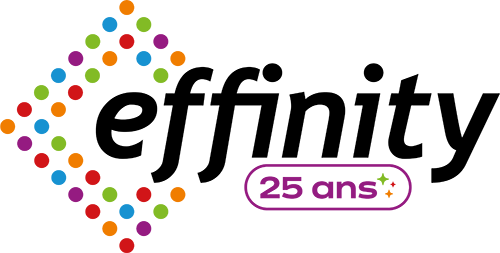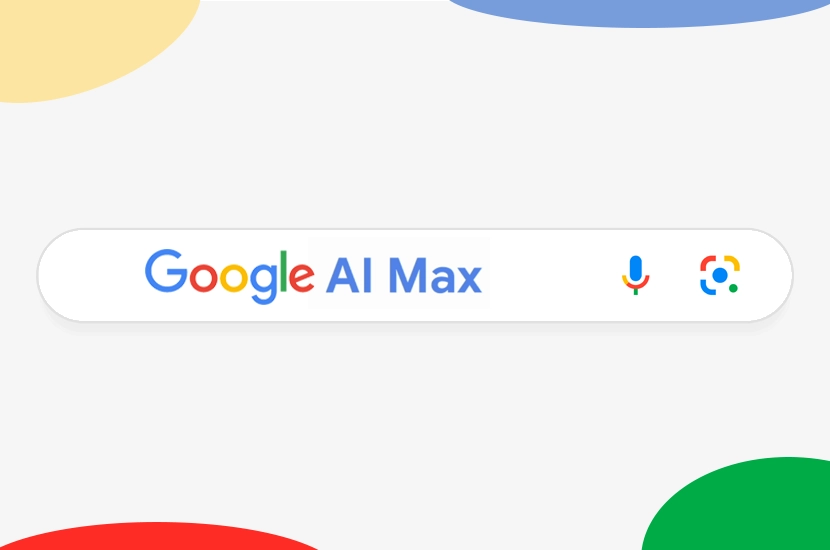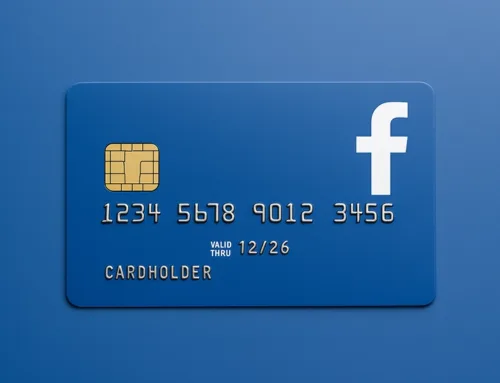The online search ecosystem is in a state of flux. The evolution of Google Search towards a more conversational experience, powered by AI Overviews, and multimodal, with tools like Google Lens, is redefining the way users interact with information. At the same time, behaviors are changing: queries are becoming longer, more complex and more nuanced, reflecting more precise intent.
It’s in this new paradigm that Google has unveiled its strategic response for advertisers: AI Max. Announced at Google Marketing Live in May 2025 and now deployed in beta, this suite of features promises to profoundly transform campaigns on the Search Network, drawing on the power of generative artificial intelligence.
Deciphering Google AI Max: more than a tool, a new philosophy
There are many reasons to launch Google Ads campaigns. AI Max is just one more. However, for advertisers and agencies, understanding a new advertising technology starts with a clear definition of its nature and scope. Understanding the very essence of AI Max is the first essential step in exploiting it properly, avoiding preconceived ideas that could hinder its adoption, and integrating it strategically into an existing set-up.
What exactly is AI Max?
AI Max is not a new type of campaign to be created from scratch. It’s a suite of optional features, a layer of artificial intelligence based on Google’s Gemini model, designed to enrich and optimize existing Search campaigns. Rather than a stand-alone system, it acts as a strategic “co-pilot” for the advertiser, boosting performance by building on existing structures and objectives. Its aim is to maximize relevance and conversions by interpreting user intent and search signals in real time.
Clarification: what AI Max is not
Like any major innovation, AI Max comes with its share of prejudices. It is essential to demystify the most common ones in order to approach the tool with the right vision:
- It’s not an opaque tool: one of AI Max’s key promises is increased transparency. Advertisers retain clear visibility over which search terms trigger their ads, which titles are served and which landing pages are dynamically chosen by the system.
- It’s not a replacement for classic Search: AI Max doesn’t disrupt the foundations of campaigns. It integrates with existing Search Network campaigns and scrupulously respects the performance objectives (CPA/ROAS) defined by the advertiser.
- This does not mean the removal of human control: far from being a “black box”, the tool provides advertisers with essential control levers. Brand filters, lists of keywords to exclude and the ability to remove AI-generated components remain fully available.
AI Max vs. Performance Max: two complementary logics
It’s important not to confuse AI Max and Performance Max, as they meet distinct strategic objectives. The fundamental distinction lies in their scope of distribution:
- AI Max focuses exclusively on the Search Network. Its aim is to supercharge the performance of Search campaigns by refining query matching and text ad personalization.
- Performance Max is a global, multi-channel campaign. It delivers ads across the entire Google inventory (Search, YouTube, Display, Discover, etc.) to maximize conversions across all touchpoints.
The two solutions are therefore not exclusive, but complementary. An advertiser can perfectly use AI Max to reinforce the precision and relevance of its campaigns on the Search Network, while relying on Performance Max to ensure a global, omnichannel presence. In short: AI Max is a precision scalpel for the Search Network; Performance Max is an omnichannel steamroller. One aims for surgical relevance, the other for total inventory domination.
With this distinction clarified, the challenge for advertisers is to understand the internal mechanics that enable AI Max to generate performance, because this is where both opportunities and risks lie.
The inner workings: AI Max’s technological pillars
At the heart of Google AI Max’s performance are two major technological pillars working in synergy. The combination of these two features enables the tool to reinterpret user intent beyond simple keywords, and respond with unprecedented relevance and personalization.

Google illustration
Pillar 1: Search Term Matching (STM)
This feature significantly extends the reach of existing keywords. Relying on broad match and keywordless technology, AI Max is able to capture relevant queries that manual targeting would otherwise miss. Google’s artificial intelligence analyzes keywords, ad creatives and landing page URLs in depth to identify new distribution opportunities. It understands search context (such as location, user history or device used) to match ads to precise purchase intent, even if the exact terms are not in the keyword list.
Pillar 2: Dynamic component optimization (Asset Optimization)
This second pillar personalizes the advertising response in real time. It comprises two complementary mechanisms:
- Text Customization: AI automatically generates and tests multiple versions of titles and descriptions for each ad. These texts are created dynamically, drawing on landing page content, existing ads and real-time search signals. As a result, the advertising message becomes hyper-personalized, adapting to each user’s unique query for maximum relevance.
- Final URL Expansion: beyond the text, AI Max also optimizes the post-click user path. Based on the intent detected in the query, the system selects and redirects the user to the most relevant landing page on the website, not necessarily the one initially defined in the ad. This process reduces friction, guides the user exactly where he or she will find the answer and, as a result, significantly improves conversion rates. For advertisers, this represents a fundamental change: performance no longer depends solely on the optimization of an ad, but on the overall relevance of the site’s content ecosystem.
Together, these two pillars form a complete value chain: the first identifies the user’s finest intent, and the second responds to it with customized ad creative and landing pages. These technological innovations translate into tangible performance gains, as demonstrated by the first results reported by Google.
The impact on performance: quantified promises and case studies
For advertisers, the adoption of a new technology is above all conditioned by its measurable impact on business objectives. Early feedback on AI Max, drawn from internal data and Google case studies, points to significant growth potential.
Key performance indicators (KPIs)
Google has released average performance figures that illustrate the added value of the solution. On average, campaigns activating AI Max achieve :
- +14% conversions or conversion value, with similar CPA (Cost Per Acquisition) or ROAS (Return on Advertising Investment).
- Up to +27% conversions for campaigns that relied heavily on exact match keywords. This spectacular gain is the direct result of Extended Query Match technology, which uncovers pockets of high-intention users that exact-match strategies, by definition, can’t reach.
Case studies: L’Oréal and MyConnect
Two concrete examples illustrate the impact of Google AI Max in different sectors:
L’Oréal
The global cosmetics giant used AI Max to boost the relevance of its search campaigns. The results were impressive: the conversion rate was doubled, while the CPA was reduced by 31%. One of the major contributions was the tool’s ability to discover conversational and novel queries, such as “what’s the best cream for pigmentation spots?”, proving its ability to capture consumers’ true intent.
MyConnect
This Australian connection services company also leveraged the solution to improve its lead acquisition. Activating AI Max resulted in a 16% increase in qualified leads, accompanied by a 13% reduction in CPA. Significantly, almost 30% of the additional conversions came from completely new queries, which the company had never targeted before.
These performances raise a fundamental question that obsesses every campaign manager: how much real control do we have over message and budget?
Staying in control: transparency and management tools for advertisers
The fear of losing control is a major and legitimate barrier to the adoption of advertising automation technologies. Aware of this concern, Google has integrated a series of steering and reporting tools into AI Max, designed to give advertisers control over their campaigns, even when AI takes over certain optimizations.
Control levers available
Advertisers are not helpless and have an arsenal of parameters to guide and constrain AI :
- Brand controls: brand inclusion and exclusion lists can be defined to control the broadcast environment and ensure that ads appear (or don’t appear) alongside specific brands.
- URL management: URL exclusions can be used to prevent the system from redirecting traffic to irrelevant pages (e.g. contact page, blog). Conversely, URL inclusions can be used at ad group level to guide AI to priority pages.
- Geographic targeting by intention: a new parameter, “places of interest”, enables finer geographic targeting at ad group level, based on the user’s intention and not just their physical location.
- Exclude keywords: Negative keyword lists are always respected, ensuring that ads are not triggered on unwanted queries.
- Pinned assets warning: this is the most critical compromise AI Max imposes on advertisers. When the “Final URL Extension” feature is activated, pinned assets in responsive ads are not respected. Google justifies this choice by prioritizing the absolute relevance of the landing page, but this creates a direct tension between algorithmic optimization and the advertiser’s compelling need to control his brand message.
Enhanced reports for greater transparency
To complement these control tools, Google has improved the granularity of reports to better understand AI actions:
- The search term report has been enhanced to include dynamically chosen titles and URLs, as well as a new “AI Max” match type to identify incremental queries.
- Component reports now display key performance indicators (KPIs) beyond simple impressions, such as spend and conversions.
- Advertisers retain the option of deleting components automatically generated by AI if they don’t meet brand standards.
Despite this arsenal of controls, early feedback from the market is highlighting challenges and points of vigilance that every advertiser needs to anticipate.
Challenges and points of vigilance: advertisers’ concerns
While Google’s communication emphasizes performance and control, vigilant experts in the field and agencies are already highlighting several areas of risk that all advertisers need to anticipate.
Risks identified by the market
The concerns raised by digital marketing professionals can be summarized in four main categories:
- Brand Safety: the main risk is that AI, by automatically generating titles and descriptions, may draw on unapproved sources or misinterpret information. This could lead to the dissemination of misleading, inaccurate or legally sensitive claims, damaging the brand’s image.
- Lack of contextual accuracy: despite its advances, artificial intelligence can sometimes lack understanding of the nuances specific to an industry. Erroneous interpretations could lead to the generation of texts, links or images that are inappropriate or simply irrelevant.
- Spend leakage: several agencies report a phenomenon of “spend leakage”, where planned investments for the Search Network are redirected to Display networks. This problem is critical because it corrupts channel attribution data, making it difficult for agencies to prove the specific value of their Search campaigns and maintain the integrity of their reporting.
- Loss of strategic control: beyond the technical aspects, a more general concern remains: that of ceding excessive control over brand message, tone of voice and budget allocation to an algorithm, however powerful it may be.
In the face of these challenges, a methodical and cautious approach is recommended to integrate AI Max safely and efficiently.
Practical guide: recommendations for controlled deployment
This section is intended as a best practice guide for advertisers wishing to test and deploy AI Max. Adopting a structured approach minimizes potential risks, while maximizing the chances of success and taking full advantage of its potential.
Key steps for getting started with Google AI Max
- Start with progressive testing: don’t switch your entire account at once. Launch an A/B test on a limited, well-defined perimeter, such as a specific campaign or group of ads, in order to precisely measure the added value on your key indicators.
- Take care with the quality of your resources: artificial intelligence feeds on the material you provide. Make sure your landing pages are clear and rich in content, and that your existing titles and descriptions are of high quality. Quality resources lead to quality optimizations.
- Actively monitor reports: take the time to analyze new detailed reports on a regular basis. They’re a goldmine for understanding AI choices, identifying new high-performance queries and deriving strategic insights for your entire account.
- Use control tools: don’t neglect the safeguards available to you. Proactively use brand filters and URL exclusions to keep control of distribution and guarantee the security of your brand.
- Clarify omnichannel strategy: if you also use Performance Max campaigns, clearly define the role and scope of each type of campaign. Good account structuring is essential to avoid overlap and enable a clear reading of results.
- Allocate a sufficient test budget: Google advises against testing AI Max on campaigns with a daily budget of less than €50. An adequate budget is necessary to ensure that the algorithm has sufficient data to learn and optimize effectively.
By following these steps, advertisers can prepare themselves for what promises to be a profound and lasting transformation of advertising on the Search Network.
AI Max, a key development in search advertising
AI Max should not be seen simply as a technical update to Google Ads, but as a paradigm shift. It marks a shift from predominantly reactive advertising, based on keyword matching, to proactive, predictive advertising, based on a deep understanding of user intent.
This strategic imperative redefines the relationship between advertiser and consumer. Despite the legitimate challenges associated with automation, Google AI Max represents a major opportunity for brands to finally reconcile performance and relevance on a large scale.
The Effinity experts’ opinion
We see Google AI Max as a unique opportunity for our customers to :
- Identify new growth drivers through the discovery of new queries
- Improve profitability by optimizing ad distribution and relevance
- Save time with intelligent automation without losing control
AI may not replace human expertise, but it is becoming an indispensable ally in staying competitive. With AI Max, Google reinforces its role as an engine of discovery and intent. Don’t hesitate to contact us if you’d like our Google Ads agency to help you integrate AI Max and turn these new capabilities into concrete, measurable performance.




